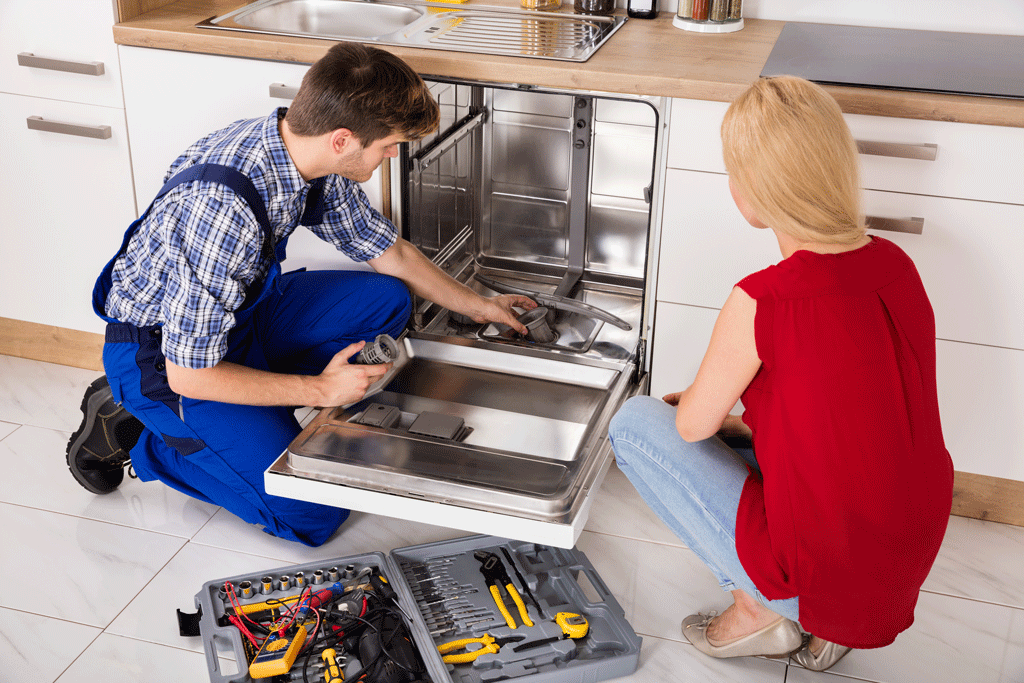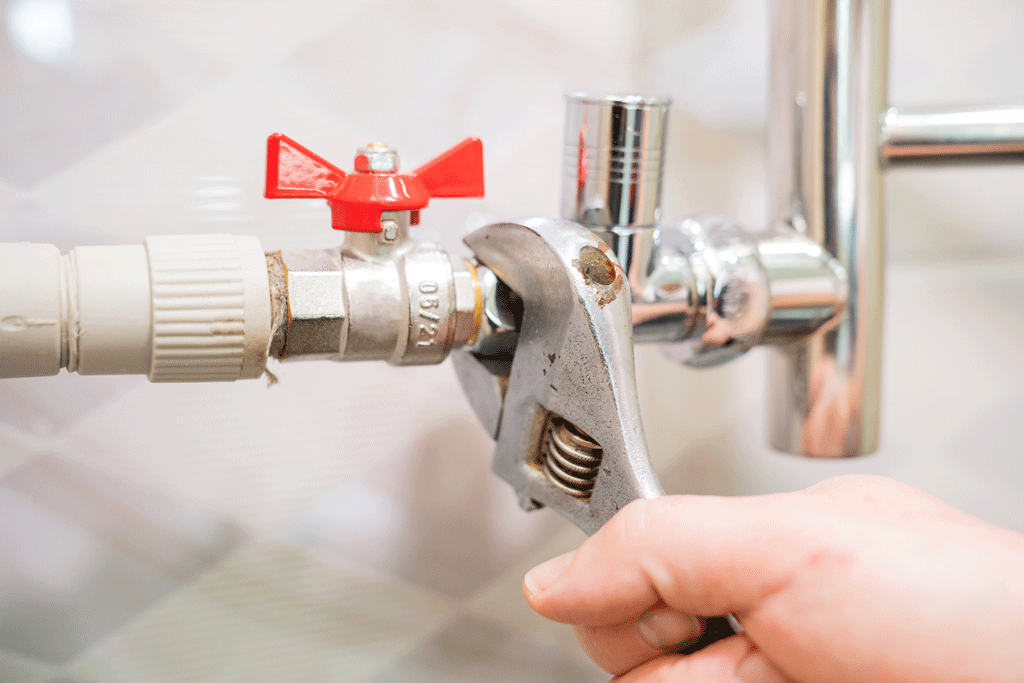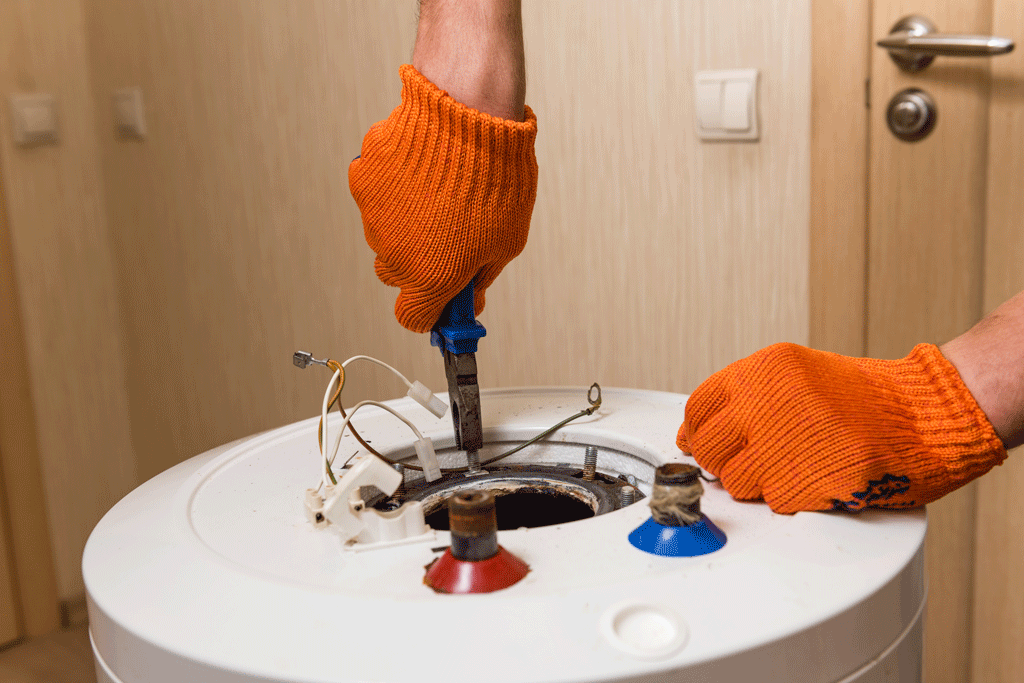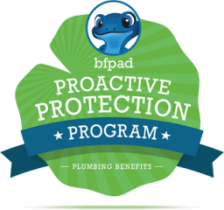
Reasons To Call A Plumber | Upgrade Your Toilet to a Rimless One
Toilets have come a long way from a basic bowl and a tank. Today, there are many different types of toilets on the market, each with unique features and benefits. One type of toilet that has gained popularity in recent years is the rimless toilet. This innovative design eliminates the traditional rim around the inside of the bowl, providing a more hygienic and efficient flushing experience. This article explores why you should call a plumber to upgrade to a rimless toilet.
Easy to Clean
One of the most significant benefits of a rimless toilet is its ease of cleaning. Traditional toilets have rims on the inside, which are often tough to clean. These rims are also breeding grounds for germs and bacteria. However, rimless toilets don’t have these rims, making cleaning much easier and more efficient. In addition, the smooth surface of a rimless toilet eliminates crevices, making it even harder for dirt and bacteria to accumulate. Contact a professional plumber to upgrade your toilet to a rimless toilet and enjoy the benefits of having a toilet that is easy to clean.
Water Efficiency
A rimless toilet is designed in that it is more water efficient. Unlike the traditional toilet, it uses a direct flush mechanism that distributes water around the toilet pan, which helps remove waste while using water more effectively. This mechanism ensures that there is a more flushing efficiency that uses less amount of water compared to traditional toilets. The powerful flush helps save water in the long run, reducing the bills to be paid.
The lack of a rim also minimizes the availability of areas where germs can accumulate; therefore, less water can efficiently clean your toilets without the worry of leaving some waste behind. If you are planning on economizing on your toilet water usage, have an expert plumber install a rimless toilet in your home and get to save on your water consumption in general.
Pleasing Aesthetic Design
The quest for a home adorned with pleasing aesthetics is a never-ending journey. From updating the wall colors to selecting stylish furniture, every upgrade enhances the overall look of your abode. However, when it comes to your toilet, the options for style and design have traditionally been limited. Enter the rimless toilet, a fantastic design breakthrough that offers superior hygiene and cleaning benefits. With no rim to trap germs and grime, this sleek design feature is quickly becoming a must-have for the modern bathroom. So, if you’re ready to indulge in the latest aesthetic trends while enjoying a germ-free environment, it’s time to call your plumber and upgrade to a rimless toilet.
Better Hygiene
Rimless toilets are designed to be more hygienic than traditional toilets. The lack of rims and grooves makes it almost impossible for bacteria, mold, and other microorganisms to grow. This makes it a great option for families with kids or individuals concerned about their health. Rimless toilets also have an improved flushing system that ensures that waste is efficiently removed from the bowl.
Comfort
Upgrading your toilet to a rimless one may seem luxurious and unnecessary, but it offers a level of comfort worth the investment. The flat interior of rimless toilets provides more space for your legs, avoiding awkward positions when sitting down or standing up. Furthermore, the lack of a rim makes it easier to position yourself, reducing the risk of splash back and providing greater confidence and comfort when using the toilet.
Types of Rimless Toilets
Wall-Mounted Rimless Toilet
Wall-mounted rimless toilets are a great choice for those who want a clean and modern bathroom look. These toilets are mounted directly on the wall, eliminating the need for visible plumbing connections. Additionally, wall-mounted rimless toilets save space and are ideal for small bathrooms. However, due to their installation requirements, these toilets may be more expensive than other models.
Close-Coupled Rimless Toilet
Close-coupled toilets are the most common type of toilet in households. Typically, they consist of a cistern on top of the toilet bowl. The close-coupled design ensures the water flush reaches every part of the bowl, thus improving its cleaning performance. This type of rimless toilet is also easy to install and maintain. However, some homeowners may feel that the cistern takes up too much space in their bathroom.
Back-to-Wall Rimless Toilet
Back-to-wall rimless toilets are close-coupled toilets that sit directly against the wall. Their seamless fitting makes them a popular choice for contemporary bathrooms. These toilets come with a hidden cistern, which helps to reduce the visual impact of the toilet. However, ensuring the plumbing is correctly aligned with the wall before installation is essential.
Floor-Standing Rimless Toilet
Floor-standing rimless toilets are a traditional style that resembles the standard toilets in most households. They stand on the floor and have a visible trap way. However, they feature a rimless design, which makes them easier to clean and more hygienic. Floor-standing rimless toilets tend to occupy more space and may not be the best option for smaller bathrooms.
Wall-hung Carriers Rimless Toilet
Wall-hung carrier rimless toilets are a variation of the wall-mounted rimless toilet installed using a carrier frame mounted on the wall. These toilets make cleaning easy due to their rimless design and are perfect for reducing the footprint of your bathroom. However, installing a wall-hung carrier rimless toilet requires significant planning and installation expertise, making it a more expensive option than other toilets.
Want To Install Rimless Toilets In Your Home? Call Us!
Upgrading your bathroom to the latest rimless toilet designs is an excellent way to ensure perfect hygiene and comfort. If you want to install a rimless toilet in your home, call us today at bluefrog Plumbing + Drain of West Houston. Our plumbing experts will help you find the best solution for your needs and install it carefully and precisely. We also offer plumbing services if you need help with maintenance and repairs. Contact us today for a free consultation.
Photo By Andrey_Popov at Shutterstock
Things A Plumbing Company Can Help Clarify When Buying A Reverse Osmosis System
Reverse osmosis systems have become increasingly popular among homeowners over the years. This is because they provide a convenient way of getting clean and safe drinking water. However, choosing the right system can be daunting, especially if you’re unfamiliar with the technical jargon and specifications. That’s where plumbing companies come in. They can help you purchase the right RO system for your home and provide valuable insights into its maintenance. In this blog post, we’ll discuss what a plumbing company can help clarify when buying a reverse osmosis system.
What Is The Cost Of The RO System?
Before you purchase a reverse osmosis system, it is good to know your budget. The price of an RO system varies depending on the size, brand, warranty, and features. The more features the system has, the more costly it will be. Furthermore, if the system has longer warranty coverage, it will be costly. While cost should never be the only factor you consider when looking for an RO system, you should at least give yourself a general idea of your budget before shopping. Therefore, if you are on a budget, you should consult an expert to recommend the best system that will suit your budget and still do its job well.
How Much Water Does The System Produce Per Day?
Reverse osmosis systems have different water production capacities, so asking your professional about the daily production rate of the RO system you want to buy is good. The daily production rate refers to the amount of purified water the system can produce daily. It is one of the essential factors to consider before buying an RO system. The daily production rate should be adequate to meet your daily needs. Your plumbing company can determine the best RO system that will suit your needs based on your daily water requirement.
What Is The System’s Wastewater Ratio?
A reverse osmosis system uses high pressure to force water through a semi-permeable membrane, which removes all impurities from your water. However, this process generates a lot of wastewater, which is discharged into a drain system. The wastewater ratio refers to the amount of water wasted for every gallon of purified water produced. A high waste-water ratio results in significant water wastage and increased water bills. Before you purchase, remember to ask your plumbing professional about the wastewater ratio of the system. Some systems are more efficient than others; some have a wastewater ratio as low as 1:1. The system you want should be water efficient to avoid water waste.
What Contaminants Does The System Remove?
Water contains many contaminants, and the type and level of contaminants in your water determine the suitable RO system for your needs. RO systems are good at removing contaminants, including chlorine, dissolved solids, minerals, and heavy metals, such as arsenic, mercury, and lead. However, remember that some systems are ineffective at removing certain contaminants.
Contact a professional to assess your water quality and recommend the best RO system to remove contaminants in your water supply. Furthermore, the experts can help you understand some of the limitations of the RO system and any extra water treatment options that may be necessary to ensure your water is safe.
What Are The Maintenance Needs?
Before you buy a reverse osmosis system, it is good to ask about its maintenance needs. For the system to work efficiently for years, it must be maintained regularly by your plumbing company. An RO system needs regular maintenance, including membrane cleaning, sanitization, and filter replacement. The frequency of maintenance depends on your specific RO system and the quality of your water supply. Most manufacturers recommend maintenance to be done at least two times every year.
It is crucial to understand the maintenance needs of the RO system before buying one so that you can be prepared for the ongoing maintenance costs needed. Get detailed information from your professional about the maintenance needs so that you can know what you are buying.
What Is The System’s Warranty And Customer Support?
Any time you are buying a product, ensure it has a warranty. A warranty ensures you get fully compensated in case issues arise. Ask your plumbing services company about the length of the warranty, what it covers, its limitations, and what you must do for the warranty to stand.
Also, customer support is another crucial thing. If you encounter issues with installation, maintenance, or operation with the RO system, you should be able to get customer support anytime. Therefore, ask your plumbing company these questions before buying your RO system so you can have peace of mind if something happens.
How Much Space Will The System Require?
RO systems come in different configurations and sizes. You must have adequate space to install and operate the system. Before you buy an RO system, call a plumbing services company to assess your home and recommend the best location. Most systems are designed for under-sink installation, so you must ensure enough space under your sink. You will need more floor or countertop space for models that require a countertop or freestanding installation.
Also, consider the clearance needed for maintenance and filter replacement. There should be enough clearance around the system to enhance simple maintenance. The more space there is, the easier it will be for your expert for installation and maintenance.
Need Help Choosing a Reverse Osmosis System? Hire Us!
If you still have questions about RO systems and want to get the best for your home, let the experts at bluefrog Plumbing + Drain of West Houston help you. Our trained experts will help you get the right system after assessing your home. We will conduct a detailed water test, examine different installation locations, inspect your plumbing, and recommend the best system. If you still need help with installation, our professionals will help you. Contact us to get started.
Photo By Andrey Sayfutdinov at Shutterstock
Best Maintenance Practices from A Trusted Plumber
When it comes to our home systems and appliances, it’s only natural to want to get as much value from our investment as possible. In order to promote any home system or appliance’s longevity, it’s important to maintain it with best care practices. When it comes to your plumbing system, there are many ways to support its function and to keep it in condition. Our plumbing company can help. bluefrog Plumbing + Drain of West Houston specializes in plumbing repairs but also in plumbing system maintenance. Let our plumbing professionals help you protect your plumbing system with some of our best maintenance practices.
Inspections
As your plumbing system ages, it can develop problems, from loose valves to pinhole leaks. Remember that no plumbing system is destined to last forever. Maintenance, however, can help you extend the life of your plumbing system’s pipes and associated fixtures. It’s helpful to schedule an inspection with a skilled plumber from our team.
We can inspect your plumbing system, looking for signs of disrepair or potentially serious problems like corrosion. Issues like sweating pipes or clanging pipes can often be addressed before they cause a more serious issue. If you haven’t had your pipes inspected for some time, you should think about scheduling one with our team. If you have an older plumbing system, you might want to line up annual inspections and maintenance.
Leak Detection
A trained plumber knows how to detect leaks. Although leaks tend to be more common when it comes to older plumbing systems, they can even affect newer systems. You might suspect that a plumbing leak is present if you smell musty odors, spot mold, or notice that your water bill has increased considerably. We can help you find the source of the moisture problem. If you have a leaky pipe, we’ll access it and make the necessary repair or pipe replacement. Remember that even a small leak can cause tremendous water damage to your home or business. Plus, if a small leak is unaddressed, it can develop into a large leak as the pipe continues to deteriorate.
Drain Cleaning
Drain cleaning is an important plumbing maintenance process. Your drains can become coated with debris like oil, grease, food, hair, soap residue, and more. The buildup can continue until it forms a clog. Does your home or business experience frequent clogs? Have you noticed that you have slow drains? These are signs that you can benefit from drain cleaning maintenance.
Our plumber will professionally clean your drain system, removing that buildup of debris from all of your drain pipes. Hydro jetting is usually the preferred method for drain cleaning. If you have a clog or partial clog, it may be necessary to begin the job with some augering. Once your drains are cleaned, you should notice fewer clogs and no slow drains.
Depending on how busy your household or commercial property is, you might want to schedule drain cleaning annually or every other year as part of your plumbing maintenance plan.
Sewer Line Maintenance
Sewer lines are, in fact, large drain pipes. The sewer line that runs underground along your property connects your home’s drain system to the city sewer system. The portion of this sewer pipe that runs along your property is your responsibility as a property owner, so if it becomes clogged or suffers damage, you’ll be required to contend with it.
Many property owners schedule sewer line maintenance annually, especially if this line has been infiltrated with tree roots in the past. Once tree roots get into the sewer line, they’ll continue to grow. They need to be removed before they can cause a clog. Clogs in the sewer line will stop up your plumbing system, rendering it totally unusable. When the sewer line is clogged, any toilet that’s flushed or sink that’s operated can lead to water backing up into the house or building, which makes for a big mess.
You may want a skilled plumber to professionally route out your sewer line annually or every other year. Even if it has not been infested with tree roots, it can still become loaded with the same debris that can clog any drain pipe. Multiple slow drains is a sign that the sewer line needs clearing. Don’t risk a wastewater backup. These backups aren’t merely messy; they can damage your property and trigger mold outbreaks.
Water Heater Tank Draining and Cleaning
Plumbing pros can also help you maintain plumbing system appliances like your hot water heater. Over time, the minerals contained in water can build up as sediment in your hot water tank. This sediment can impact the function of the unit. It can even damage it. It’s an important maintenance task to drain and clean the tank. That way, you can prevent sediment from building up in the appliance and reducing its longevity.
Toilet Problems
Running toilets or leaky toilets can cost you. A running toilet can waste up to 30 gallons of water each day. A leaky toilet can damage flooring, leading to expensive repair costs. We can inspect toilets to make sure they’re operating properly. The sooner you address small toilet issues, the sooner you can prevent them from developing into more serious issues. If you have any problems with your toilets, we can assess them for you.
Call bluefrog Plumbing + Drain of West Houston if you want to benefit from our plumbing maintenance solutions. We can help you design a maintenance plan for your home or business’s plumbing system.
Whether you need inspection service, drain cleaning, or leak detection, we can help. Our plumbing pros are certified and experienced. If you need any type of plumbing maintenance or repair service, we can help–and always for a fair price and with the skill we’re known for.
Photo By O_Lypa at Shutterstock
Why Should You Hire a Water Heater Repair Technician To Relocate Your Attic Installed Water
Depending on your area of residence, installing your water heating unit in your attic may be considered a completely bizarre or a normal idea. After all, connections, geography, and the layout of your home determine most of these decisions. It is a common practice for homeowners to install water heaters in out-of-reach and out-of-sight places such as the basement, garages, closets, and even at times, outside. Hence, whether you’re purchasing a home and noticed the water heater is installed in the attic or have owned the property for years and are curious, you are at the right place. This article will discuss the risks of having a water heater repair technician install a water heating unit in your attic.
Risks Of Installing a Water Heater In Your Attic
For any homeowner, saving money and space is essential. If installing a water heater in your attic will save you money and space, why not? You could even save on energy use during summer as the outdoor heat will warm the water to some level. That means the water’s temperature rise will not be as high. During winter, a water heater repair technician can insulate the unit using an insulation blanket to prevent heat loss. But is installing a water heater in the attic worth it? Below are the main risks you expose yourself and your home by installing your water heating unit in your attic.
Increased Risk Of Carbon Monoxide Poisoning
Is your water heater gas-powered? Carbon monoxide poisoning is one of the main risks you’ll expose your home and family to by installing it in the attic. This happens when the unit doesn’t complete the combustion. Like any other appliance powered by fossil fuels, a gas-powered water heater also features an exhaust or flue where the gaseous combustion products are exhausted into the outside environment. Unfortunately, if the exhaust vents are blocked in any way or malfunction, the flue gases and other combustion byproducts will not be exhausted.
Carbon monoxide isn’t visible and doesn’t smell. In high concentrations, carbon monoxide can be deadly. If the heater isn’t vented or maintained, carbon monoxide might find its way into your living space, posing a serious risk to you and your family. If you install a gas-powered water heater in the attic, then you must ensure the heater is properly vented and serviced to reduce any risk of carbon monoxide poisoning.
Risk of Water Damage
Imagine you install a water heater in your attic, then it develops a silent leak. Before you realize the leakage, wouldn’t it have caused serious water damage? Water damage is one of the most serious risks of attic water heater installations. Whenever the water starts leaking, it seeps through the walls and ceilings, resulting in significant water damage to your attic, walls, and floors. As if this isn’t dangerous enough, the damp and dark conditions caused by the leakage results in mold growth. Mold is a particularly notorious fungus that causes a myriad of health issues. Have you noticed that family members increasingly become allergic when entering your home? This phenomenon is called SBS and can be inconvenient and frustrating. Thus, if you install a water heater in the attic, you should be diligent with routine maintenance to avert a potential risk of water damage.
Structural Damage
Although not immediately visible, the other danger of installing a water heater in your attic is structural damage. The water heater’s added weight may increase stress on the attic structure and even cause damage to the walls and ceiling. While this depends on the size of the water heater installed, the additional weight may even damage your entire home if the attic isn’t sufficiently supported. Do you have a water heater installed in your attic? Then you might want a water heater repair technician to move it to a safer place. You should first ensure the attic structure can sufficiently handle the additional weight of the heater if you decide to install it there.
Access Challenges
If a water heater is installed in the attic, it could be challenging to access it. Imagine an emergency repair is needed because the unit is malfunctioning. Wouldn’t inaccessibility inconvenience repair professionals? The technician might require specialized expertise and equipment to access and repair the unit safely. However, you should know these challenges and take the necessary measures to prevent injuries and accidents when accessing the water heater.
Lower Energy Efficiency
Water heaters installed in the attic could be less energy efficient than those installed in your home’s other well-ventilated areas. Depending on the insulation and climate of your home, the attic could be prone to serious temperatures that might affect your water heater’s performance resulting in higher energy bills. But won’t the water heater save you a fortune during summer? While this might be true, consider the cold season. Unless the water heater tank is properly ventilated, heat loss from the already-heated water could be lost. Hence, you should consider the potential costs of energy when choosing where to install the unit and, if possible, choose an energy-efficient water heater.
Attic Water Heater Issues to Look Out For
The biggest attic water heater issue to watch out for is strange noises. As if all the above risks weren’t enough, those scary sounds emanating from the unit could make your life uncomfortable. Whenever you notice whistling or popping sounds from the water heater, that is normally a sign that there’s something out of place. The other issue to look for is moisture accumulation in the attic. As mentioned above, this could result in mold and mildew growth. If you hear the sounds or notice the heater leaking, immediately call a water heater repair technician.
Contact Us!
Have you felt that you cannot tolerate the risks above? If your water heater is installed in the attic, we can help. Contact us at bluefrog Plumbing + Drain of West Houston for help relocating the water heater.
Photo By SaskiaAcht at Shutterstock
The Most Important Qualities of a Good Plumber
Plumbing repairs and installations can be complex jobs. Besides, without the right tools and skills for these jobs, they can put you and your home in grave danger and even lead to mistakes that might prove costly in the end. Therefore, unless you are a professional plumbing contractor, you need to fight the temptation to handle plumbing problems on your own. Instead, you need to have a professional plumber on speed dial. This is because professional plumbing contractors are adequately trained and equipped with everything, they need to resolve plumbing problems correctly, efficiently, and safely. However, it is important to note that not all plumbing contractors can be trusted. In fact, although there are a lot of plumbing service providers near you, many of them are not competent and reliable enough to be trusted with something as valuable as your home’s plumbing infrastructure. Therefore, when shopping for a plumbing contractor, you need to be extremely careful not to trust an incompetent person. But how exactly can you identify a good plumbing contractor? Below is a rundown of the most important qualities you should look for in a plumbing service provider.
THEY MUST BE LICENSED
Plumbing contractors are usually regulated by local authorities. This regulation is meant to ensure that professional plumbing service providers do not put people and buildings in danger as a result of poorly done plumbing jobs. Indeed, professional plumbers need to undergo years of formal training, acquire some experience, and pass some tests to qualify for licensing. Therefore, their licenses serve as proof of competence. Although you can come across a licensed plumbing service provider who cannot be trusted, all good plumbing contractors must be duly licensed and willing to display their licenses for everyone to see. If a given plumbing service provider is unwilling to show you their licenses, and you have reasons to believe that they may not be duly licensed, you should not take the risk of hiring them. This is because they may be incompetent, and they could mess up your plumbing system, meaning that they might end up wasting your time and money.
THEY MUST BE INSURED
Some plumbing jobs can be quite dangerous. Indeed, Plumbing contractors are at risk of accidents that could leave them with serious injuries. For instance, if you have a job that requires your plumbing service provider to access an overhead tank, it might put them at risk of falling and sustaining severe fall injuries. Similarly, if your water heater has malfunctioned, repairing it could expose the people doing the job to the risk of getting burned or suffering serious electrical injuries. The good news is that good plumbing contractors prepare for such risks by getting insured. If you hire an uninsured plumbing contractor, you will risk losing money since you could get held financially liable for the physical injuries they might suffer while working in your home. But by ensuring that your plumbing contractor is insured, you will not have to worry about such risks since their insurance should cover them. Therefore, before you can settle for a particular plumbing services provider, you need to ascertain if they are adequately insured. If the plumber you are about to hire is properly insured, you should not allow them to lay their hands on your plumbing system.
THEY MUST BE EXPERIENCED AND REPUTABLE
Plumbing contractors generally seem to get better at what they do with experience. As such, a more experienced plumber is likely to be more conversant with the plumbing issues you might run into, including the more complex ones. On the other hand, an inexperienced plumbing contractor might be incompetent, and they may not have what it takes to handle some complex plumbing situations. Therefore, when shopping for a professional plumbing contractor, you need to ensure that you pick an experienced one.
However, it is important to note that being in the business for many years is not enough. In addition to experience, a good plumbing contractor should have a solid track record. As such, before you can trust a given plumbing contractor with your plumbing infrastructure, you need to find out what other people have to say about them. To this end, you can go to online customer review sites like Yelp to read customer reviews. Of course, it is hard to come across a business without some critical reviews, but if a given plumbing contractor has received too many negative reviews pushing their overall rating to way below average, then you should not risk hiring them. Therefore, while customer reviews should be taken with a pinch of salt, they can help you to identify the plumbing contractors you should avoid.
THEY MUST BE WILLING TO OFFER A WARRANTY
No matter how great a plumbing company might be, you can never be sure that they will do a good job. Therefore, there is a good chance that they may fail to fix your plumbing issues decisively, meaning that you might soon be forced to spend more time and money on the same issue. The good news is that you can protect yourself from such a risk by simply demanding a warranty for the services offered. With a warranty, you can protect yourself against the cost of substandard plumbing solutions since you will have the right to get the job redone for free should the problem at hand reoccur within a specified time. Therefore, before you can choose to trust a given plumbing service provider, you need to ascertain if you are going to get a quality guarantee for the services received. If the answer is no, you should not take the risk of hiring them.
THE BOTTOM LINE
As you can see, when shopping for a plumbing service provider, you should be careful not to settle for an incompetent person. If you are looking for a dependable plumbing contractor near you, bluefrog Plumbing + Drain of West Houston is your best bet. Call us for more information about our services.
See our most recent blog on this topic here.
Check out our reviews here
Photo By Andrey_Popov at Shutterstock
Kris Stewart





;)






